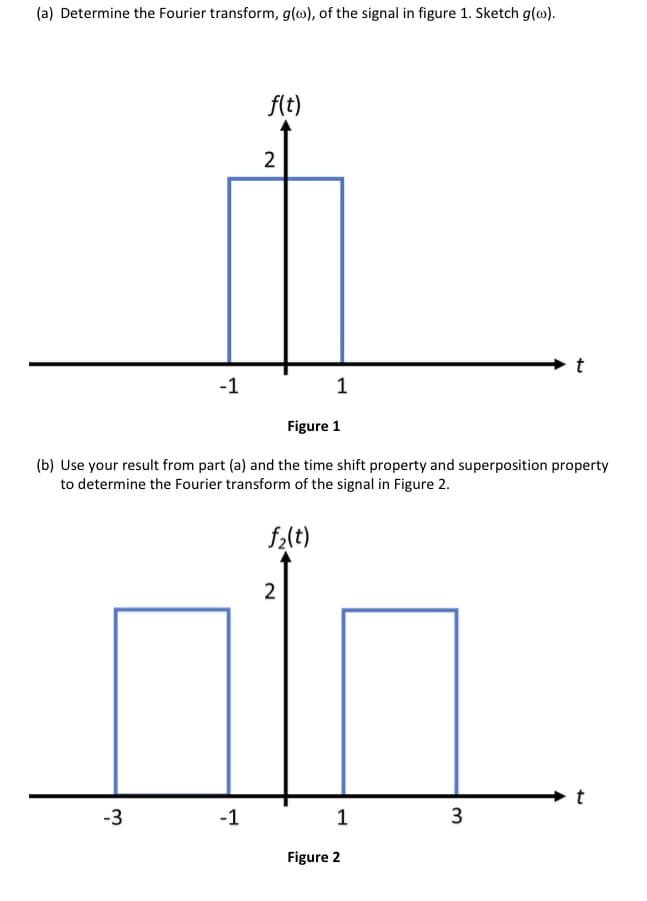(a) Determine the Fourier transform, g(m), of the signal in figure 1. Sketch g(m). f(t) 2 -1 1 Figure 1 (b) Use your result from part (a) and the time shift property and superposition property to determine the Fourier transform of the signal in Figure 2. f,(t) -3 -1 1 3 Figure 2 2.
(a) Determine the Fourier transform, g(m), of the signal in figure 1. Sketch g(m). f(t) 2 -1 1 Figure 1 (b) Use your result from part (a) and the time shift property and superposition property to determine the Fourier transform of the signal in Figure 2. f,(t) -3 -1 1 3 Figure 2 2.
Algebra & Trigonometry with Analytic Geometry
13th Edition
ISBN:9781133382119
Author:Swokowski
Publisher:Swokowski
Chapter6: The Trigonometric Functions
Section6.6: Additional Trigonometric Graphs
Problem 77E
Related questions
Question
Please could I have the written solutions for part A and part B.
(Applied calculus - Mathematics)

Transcribed Image Text:(a) Determine the Fourier transform, g(@), of the signal in figure 1. Sketch g(@).
f(t)
2
-1
1
Figure 1
(b) Use your result from part (a) and the time shift property and superposition property
to determine the Fourier transform of the signal in Figure 2.
f,(t)
2
-3
-1
1
Figure 2
to
to
3.
Expert Solution
This question has been solved!
Explore an expertly crafted, step-by-step solution for a thorough understanding of key concepts.
Step by step
Solved in 2 steps with 2 images

Recommended textbooks for you

Algebra & Trigonometry with Analytic Geometry
Algebra
ISBN:
9781133382119
Author:
Swokowski
Publisher:
Cengage

Linear Algebra: A Modern Introduction
Algebra
ISBN:
9781285463247
Author:
David Poole
Publisher:
Cengage Learning

Elementary Linear Algebra (MindTap Course List)
Algebra
ISBN:
9781305658004
Author:
Ron Larson
Publisher:
Cengage Learning

Algebra & Trigonometry with Analytic Geometry
Algebra
ISBN:
9781133382119
Author:
Swokowski
Publisher:
Cengage

Linear Algebra: A Modern Introduction
Algebra
ISBN:
9781285463247
Author:
David Poole
Publisher:
Cengage Learning

Elementary Linear Algebra (MindTap Course List)
Algebra
ISBN:
9781305658004
Author:
Ron Larson
Publisher:
Cengage Learning